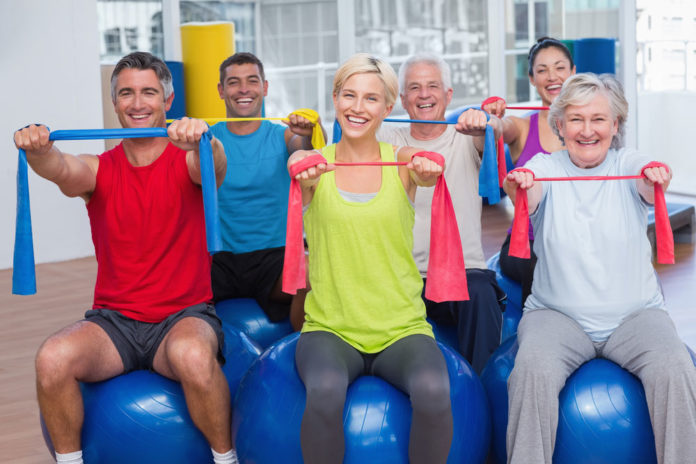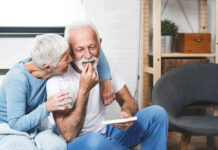While getting and remaining active is stressed at a young age, the recommendation is extended across all life stages. Although reduced energy may compromise the desire to exercise, its benefits may be much greater than channeling into a television series for hours at a time. So swap the remote for a pair of tennis shoes and embrace these suggested exercises for seniors and elderly.
Benefits of Exercise for Seniors
Weight Maintenance
Obtaining and sustaining a healthy weight is advocated for all life stages. But as the body ages, lean body mass is mostly replaced with fat mass, subsequently reducing metabolism speed and facilitating weight gain with much more ease. Regular aerobic exercise and resistance training paired with a nutritious diet can help prevent further weight gain and prompt maintenance or loss.
Osteoporosis Prevention
Osteoporosis is a disease in which bones become weakened, increasing their susceptibility to break. It is most common in the older population with additional risk factors pointing to females, insufficient calcium and vitamin D intake, and a sedentary lifestyle. A diet rich in calcium and vitamin D and exercise have been touted to reduce osteoporosis risk, including the incorporation of milk, yogurt, cheese, fatty fish, egg yolk, and cereal. Since sunlight is a natural source of vitamin D, head outdoors when getting active!
Balance Conservation
Balance naturally tends to decline with age, especially if not working proactively to maintain it. Imbalance may lead to falls and cause tremendous pain, while conserving balance can reduce the injury risk. In addition to balance exercises, preserving muscle and bone strength help to conserve balance.
Independence
Upholding endurance and strength allows seniors to keep their independence at home. Maintained autonomy to complete day-to-day functions – cleaning, cooking, laundry, etc. – not only reduces the need for caregivers, but necessitates their quality of life.
Exercise for Seniors
The following exercises are not only worthy on their own, but encompassing each type offers the greatest benefits.
Aerobic Exercise
Also recognized as endurance workouts, aerobic exercise elevates breathing and heart rate and stimulates blood flow. Aerobic exercise supports weight loss and maintenance while reducing the risk of health conditions such as heart disease. Recommendations suggest at least 150 minutes of aerobic exercise each week, including brisk walking, swimming, and biking. Gardening, cleaning, and doing the laundry can also be beneficial.
Resistance Training
While resistance or strength training is touted across the board, it is one of the best exercises for elderly. Considering the anticipated loss of muscle mass as age advances, resistance training can assist in muscle maintenance and stimulate its growth. Conserve muscle and strength with these 10 exercises!
Stretching
It is not too uncommon to dismiss or forget about stretching following a workout, but stretching has great benefits and should not go unnoticed. Stretching can improve flexibility and encourages greater range of motions, ultimately allowing seniors to keep functional movements to bathe and dress themselves. Find detailed stretching and flexibility exercises here.
Balance Exercises
As mentioned, balance is also extremely important for senior wellbeing and can prevent against falls and injuries. But rather than looking over balancing exercises much like stretches, try some simple in-home balance exercises.






